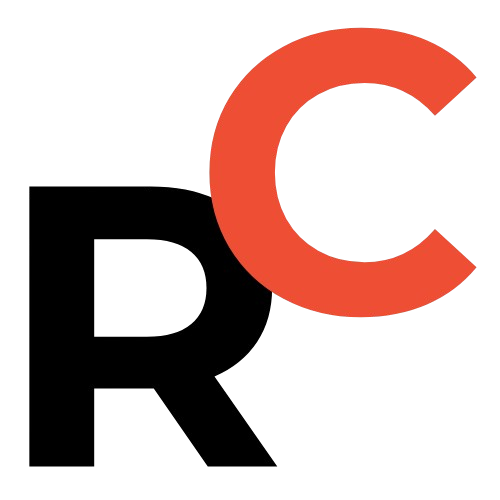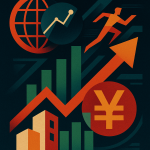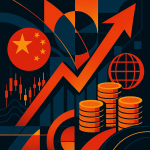Key Points
- Effective September 1, 2025, personal life insurance pre-set interest rates have been officially lowered, a pivotal change for the industry and consumers.
- The maximum pre-set interest rates are now 2.0% for ordinary insurance, 1.75% for dividend-paying insurance, and 1.0% for universal life, marking the end of the “2.5% era”.
- Over the past decade, pre-set interest rates have steadily declined from 4.025% to 2.5%, with the pace of reduction accelerating significantly in recent years.
- To counteract the impact of lower rates, dividend-paying insurance (fenhong xian 分红险) is emerging as a key strategic focus for major insurers like 中国人寿 and 中国平安.
- Lower pre-set interest rates mean higher premiums for consumers and reduced returns for products like incremental whole life and endowment annuities, necessitating industry adaptation.

Life insurance pre-set interest rates have been officially lowered today, marking a major inflection point for insurers, agents, and consumers.
In recent times, life insurance agents have seen their working hours and dialogue counts rise weekly, accompanied by frequent “good news” reports of product sales.
One insurance agent mentioned that as the product discontinuation deadline approached, some regions saw “dual recording” for policy subscriptions booked from daytime through 8:30 PM.
On August 31, an insurance agent posted on their social media, stating, “The 2.5% era is about to become history,” and “The last few hours, time is money, action is productivity.”

Find Top Talent on China's Leading Networks
- Post Across China's Job Sites from $299 / role
- Qualified Applicant Bundles
- One Central Candidate Hub
Your First Job Post Use Checkout Code 'Fresh20'

Policy Adjustments and Market Reactions
In July of this year, the Chinese Insurance Association (Zhongguo Baoxian Hangye Xiehui 中国保险行业协会) issued a document indicating that the current research value for pre-set interest rates on ordinary personal life insurance products is 1.99%.
In January and April of this year, the Association published research values of 2.34% and 2.13%, respectively.
According to the dynamic adjustment mechanism for pre-set interest rates that links them to market rates, this latest research value has “triggered” an adjustment.
Under relevant regulations, if the maximum pre-set interest rate for an insurer’s in-force ordinary personal life insurance products continuously exceeds the research value by 25 basis points or more for two consecutive quarters, the insurer must promptly reduce the maximum pre-set interest rate for new products and smoothly transition between old and new products within two months.
Previously, various insurance companies announced that they would adjust the pre-set interest rates or maximum guaranteed rates for new 备案 (bèi’àn) products.
They would no longer accept applications for insurance products exceeding the current maximum pre-set interest rate after 24:00 on August 31, 2025.
Following this adjustment, the maximum pre-set interest rate for ordinary insurance products is 2.0%,
for dividend-paying insurance products it is 1.75%,
and for universal life insurance products, the maximum guaranteed rate is 1.0%.
This explains why the insurance agents described the “2.5% era as about to become history.”
After collecting premiums, insurance companies deduct relevant costs and invest the premiums.
Any surplus generated after deducting the portion promised to customers from investment returns is referred to as “interest rate difference gains”, which is one of the primary sources of income for insurance companies.
Based on the 2.5% rate before this adjustment, insurers would need investment returns above that level to be profitable on those guarantees.
The reduction in pre-set interest rates for personal life insurance means that a higher amount of liability reserves will need to be set aside in the future.
However, this also brings the liability cost of new business closer to the true market interest rates, which is beneficial for risk control.
For the average consumer (laobaixing 老百姓), a decrease in pre-set interest rates often means that product premiums will be more expensive, and the returns on products like incremental whole life insurance, endowment annuities, and educational annuities will decrease.

ExpatInvest China
Grow Your RMB in China:
- Invest Your RMB Locally
- Buy & Sell Online in CN¥
- No Lock-In Periods
- English Service & Data
- Start with Only ¥1,000

A Decade of Rate Reductions
Over the past decade, the pre-set interest rate for personal life insurance products has steadily declined from 4.025% to 2.5%, with the pace of reduction significantly accelerating.
From 2013 to 2019, the pre-set interest rate dropped from 4.025% to 3.5%, taking approximately six years.
Subsequently, it took only two to three years to fall from 3.5% to 3.0%.
Between 2023 and 2024, the pre-set interest rate further decreased to 2.5%.

Resume Captain
Your AI Career Toolkit:
- AI Resume Optimization
- Custom Cover Letters
- LinkedIn Profile Boost
- Interview Question Prep
- Salary Negotiation Agent

The Rise of Dividend-Paying Insurance
- China Life Insurance (中国人寿): Transformation efforts, rebound in dividend product sales in Q2 2025 due to agent familiarity and consumer understanding.
- People’s Insurance Company of China (PICC Life Insurance) (中国人保): Optimizing product structure toward high-value annuity and whole life, accelerating shift to dividend-paying products for interest rate loss mitigation.
- Ping An Insurance (China) (中国平安): Continuing transition from traditional to dividend-paying insurance to lower liability costs, maintaining competitive dividend settlement rates through asset allocation.
- China Pacific Insurance (中国太保): Believes rate adjustments present both challenges (short-term competitiveness drop) and opportunities (narrows gap, highlights relative advantages, promotes business optimization).
- New China Life Insurance (新华保险): Expanding dividend-paying insurance sales is crucial for cost reduction; established leadership and promotion teams despite sales force unfamiliarity with such products.
To address the impact of lower pre-set interest rates, insurance companies have already begun adjusting their product strategies, and dividend-paying insurance (fenhong xian 分红险) has started to emerge as a key focus for many companies.
At recent interim earnings conferences for several listed insurance companies in mid-2025, multiple executives highlighted their dividend-paying insurance businesses.
Hou Jin (Hou Jin 侯晋), Assistant President and Chief Actuary of China Life Insurance (Zhongguo Renshou 中国人寿), stated that this year is a critical year for China Life Insurance’s transformational development, encompassing business, team, and channel transformations.
Due to a certain adaptation period, the entire industry, including China Life Insurance, experienced a slowdown in new business development at the beginning of the year.
However, with agents becoming more familiar with selling new dividend-paying products and consumers gaining a better understanding of them, a rebound in sales in the second quarter was evident.
Regarding the adjustment of pre-set interest rates, Li Mingguang (Li Mingguang 利明光), President of China Life Insurance (Zhongguo Renshou 中国人寿), commented that China Life Insurance has established a comprehensive operational management system covering front, middle, and back offices.
The company has prepared by stocking new products and training personnel, enabling it to respond flexibly to adjustments, and the impact is expected to be limited.
He added that the company’s overall operational momentum is stable and positive, with business performance meeting expectations, and it anticipates achieving rapid value growth this year.
Xiao Jianyou (Xiao Jianyou 肖建友), Vice President of People’s Insurance Company of China (Zhongguo Renmin Baoxian 中国人保) and President of PICC Life Insurance, stated that in the second half of the year, PICC Life Insurance will optimize its product structure, focusing entirely on high-value products such as annuity insurance and whole life insurance.
Concurrently, it will accelerate the transformation toward dividend-paying insurance products to mitigate interest rate loss risk.
Guo Xiaotao (Guo Xiaotao 郭晓涛), Co-CEO and Vice President of Ping An Insurance (China) (Zhongguo Ping’an 中国平安), noted that on the liability side, Ping An continues to transition from traditional insurance to dividend-paying insurance, effectively lowering the company’s liability costs.
Ping An’s dividend-paying insurance settlement rates remain highly competitive in the market, a competitiveness stemming from effective asset allocation.
Zhang Yuanhan (Zhang Yuanhan 张远瀚), Chief Actuary of China Pacific Insurance (Zhongguo Taibao 中国太保), believes that this new round of pre-set interest rate adjustments presents both opportunities and challenges for dividend-paying insurance.
On one hand, it will inevitably lead to a short-term decrease in the competitiveness of dividend-paying insurance products and increase sales difficulty.
On the other hand, it narrows the gap between dividend-paying and traditional insurance pre-set interest rates, making the relative advantages of dividend-paying insurance more prominent.
This will promote the optimization of the overall business structure and, in the long run, facilitate the management of interest rate loss risk and the high-quality development of the business.
Gong Xingfeng (Gong Xingfeng 龚兴峰), President and CFO of New China Life Insurance (Xinhua Baoxian 新华保险), highlighted that expanding the sales of dividend-paying insurance in a low-interest rate macroeconomic environment is a crucial measure for the company to implement cost reduction and efficiency improvements.
Dividend-paying products inherently meet customer needs, but the company faces significant challenges due to its sales force not having sold dividend-paying products for an extended period.
To address this, the company established a dividend-paying insurance transformation leadership group and a specialized sales promotion team (integrating asset-liability management and front-line collaboration) and a dividend account management team to jointly advance the dividend-paying insurance transformation.

What This Means — Quick Takeaways for Investors, Founders, Agents, and Marketers
- For investors: Expect shifts in insurer profitability as guaranteed-rate liabilities align closer to market rates.
- For founders & insurtech builders: There’s opportunity in tools that speed dividend-product distribution, agent training, and asset-liability management.
- For agents: Product knowledge and sales playbooks for dividend-paying insurance will be the new table stakes.
- For marketers: Messaging should emphasize risk-adjusted returns, product transparency, and the role of dividends vs guaranteed floors.

Practical Next Steps
- Review product portfolios to evaluate sensitivity to lower pre-set rates.
- Strengthen ALM (asset-liability management) processes to preserve settlement competitiveness for dividend products.
- Reskill sales teams on dividend product structures and client value communication.
- Refine consumer-facing materials to explain how dividend-paying insurance differs from traditional guaranteed-rate products.

Linking Opportunities
- Link to regulatory pages on pre-set interest rate guidance and dynamic adjustment mechanisms.
- Link to insurers’ investor relations releases discussing dividend strategy, such as China Life Insurance and Ping An Insurance (China) filings.
- Link to product pages for dividend-paying insurance and annuity solutions to show real-world offerings.

Bottom Line
The move away from the 2.5% era is a watershed moment for China’s life insurance market.
It forces insurers to align liabilities with realistic market returns and accelerates a long-term shift toward dividend-paying insurance as a structural response to lower guaranteed rates.
Agents, insurers, and ecosystem players who build strong ALM, product education, and dividend-focused distribution will be best positioned in the new landscape of lower pre-set interest rates.
Life insurance pre-set interest rates continue to reshape product design, distribution, and strategy as the industry adapts.

![The Stock Connect Effect: Jaw-Dropping Surges Meet Sobering Data on Pullback Risks [FreshFromChina]](https://freshfromchina.com/wp-content/uploads/2025/05/the_stock_connect_effect_jaw_dropping_surges_meet_sobering_data_on_pullback_risks.png____FreshFromChina-150x150.png)


